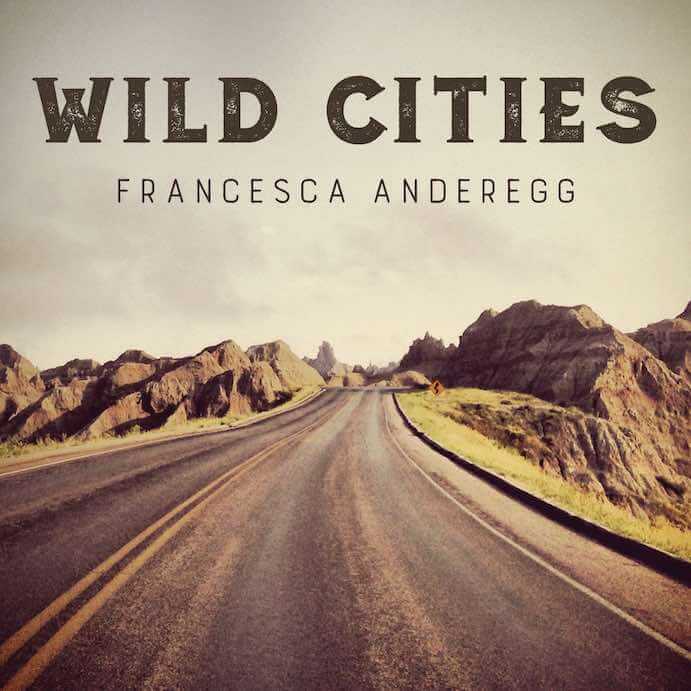The violinist Francesca Anderegg’s album Wild Cities (on New Focus Recordings) is incredibly earnest. Her performances with the pianist Brent Funderburk are enthusiastic and eager; the minimalist-influenced pieces by five young American composers voluble and energetic. Anderegg is excited about this music, and wants you to be, too.
I want to share her excitement, but can’t quite get there. Taking its title from the Allen Ginsberg poem “After Dead Souls,” which the composer John Adams used as the epigraph to his autobiography, Wild Cities features music inspired by Adams’ combination of minimalism, more traditional structure, and Romantic harmony. For the most part however, both Anderegg’s performances and the pieces on this recording are preoccupied with rhythmic drive, barreling vivaciously forward without as much regard for emotional content or its corollary, a purposeful overarching form.
The major exception to this is Hannah Lash’s Adjoining (2015), commissioned for this album. The least minimalist of the pieces (I’m not even sure how it fits into the theme of minimalist inspiration), it is a decadent, brooding meditation similar to the works of Alban Berg, which stretch harmony to its limit. Rich chords continually defy resolution, though Lash’s harmonic language is not quite as pained as Berg’s.
Francesca Anderegg
Adjoining is so close to being a truly great piece, but I think Anderegg’s performance prevents it from reaching that status on this recording. She doesn’t take enough time to let the piece breathe, to feel the resistance in these intense harmonies and struggle against it. Perhaps Anderegg was too taken up by the rhythmic rush of the rest of the album to stretch time here and revel in Lash’s harmonies. Her icy tone also conflicts with both the warmth of the piece and of Funderburk’s generous playing. It is as if she is presenting only the body of the piece, rather than excavating its soul. The same problem occurs throughout the recording, and is evident in the way Anderegg describes the pieces in her liner notes. She continually extols the “kinetic, alive, bumpy” quality of minimalism, focusing almost exclusively on their rhythmic aspects and outward appearance (“duality between a smooth surface and animated inner rhythms.”)
Some of the pieces are entirely fixated on this kineticism. Ryan Francis’s Remix (2004) is a breathless, headlong sprint filled with burbling repetitive patterns and abrupt shifts in tempo and mood. Both the stream of notes and sudden changes are almost too rapid to wrap your head around before they have moved in another direction once again, with brief lyrical sections especially suffering from a lack of space or development. While the rhythms are lively, that is the main thing one can pick up on: aspects of the body, without the soul again.
Anderegg is more convincing in Clint Needham’s On the Road (2013). The first movement, “Nothing behind me,” showcases her most touching playing. A simple, sentimental melody in the violin over firmly-rooted piano chords conjure images of a vast, unchanging landscape with a polished car soaring forth across it. “Everything ahead of me,” the second movement, taps into a churning, motoric drive that is much more fun and exciting than the rush of Remix.
Brent Funderburk
Ted Hearne’s short Nobody’s (2010) is the only piece where Anderegg is not joined by Funderburk. In place of piano accompaniment are thudding stomps, a practice taken from Appalachian fiddle music. Fiddle phrases are repeated with a variety of attacks and techniques, as though a violinist was fooling around on their instrument, experimenting with different methods of playing some memorized motifs.
The most inventive, and “bumpy,” work on the album is Reinaldo Moya’s four-movement Imagined Archipelagos (2012). Though it suffers from the problem that plagues all of these pieces–that of a modular form where sections don’t always cohere and sometimes transition jarringly–it contains engrossing textures and captivating moods. All of the movements feature multiple temporal strands layered on top of each other, with different rhythms unfolding simultaneously. In “The Island with the Imaginary Moons,” this leads to bit of a muddle, but the music still manages to strike a simultaneously consoling and unsettled tone. “The Island of Many Calendars” pits a wistful violin against a constantly flowing piano; even when the violin tries to ignore the inexorable movement of the piano, it can’t stop time from oozing away. “The Island at Noon” focuses on an insistent rhythm while layers appear and disappear around it.
Finally, “The Island of the Imagined Birds,” the last movement and the most thrilling piece of music on Wild Cities, is built on a progression that could be a tango. But this repeated music is continually scuffed by elongation or shrinking, generating a quirky, unpredictable groove of the sort you might encounter in some contemporary jazz. It’s simultaneously brainy and physical, perfectly embodying Anderegg’s description of a “smooth surface and animated inner rhythms.” This is music I can get excited about.

